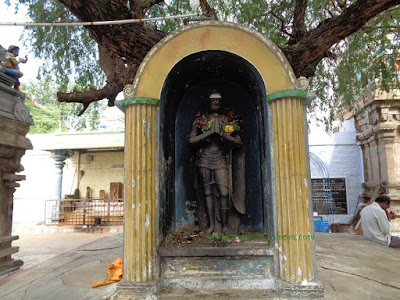வல்வில் ஓரி
கடையெழு வள்ளல்களில் ஒருவரான வல்வில் ஓரியை, "மழவர் பெருமகன் மாவள் ஓரி" என்று சங்க இலக்கியமான நற்றிணை குறிப்பிடுகிறது(1).
 |
| Statue of Valvil Ori in Rasipuram Kailasanathar Temple |
அதாவது மழவர் குல வல்வில் ஓரியை, "மாவேள் ஓரி" என்று குறிப்பிடுகிறது. இதன்மூலம் வல்வில் ஓரி மன்னர் "வேளிர் மரபினர்" என்பது உறுதியாகிறது. மழவர்கள் என்பவர்கள் சேரர்களின் கிளைப்பிரிவினர் ஆவர்.
கி.பி. 2 ஆம் நூற்றாண்டின் நூலான "தகடூர் யாத்திரை", தகடூர் மழவர்களான அதியமான்களை, "பொறையனான சேரனின் தம்பி" என்று குறிப்பிடுகிறது :-
"கால வெகுளிப் பொறையகேள் நும்பியைச்"(2)
சோழர் காலத்தில் தகடூரை (தர்மபுரி) தலைமையிடமாக கொண்டு ஆட்சிசெய்த அதியமான்கள் தங்களை, "சேர வம்சத்தவர்கள்" என்றும் "கேரள அரசர்கள்" என்றும் குறிப்பிட்டனர். இதை திருவண்ணாமலை மாவட்டத்தில் உள்ள போளூர் திருமலை கல்வெட்டும், ஆந்திர மாநிலம் சித்தூர் மாவட்டத்தில் உள்ள லட்டிகம் கல்வெட்டும் தெரிவிக்கின்றன :-
"ஸ்ரீமத் கேரள பூபரிதா யவநிகா நாம்நா" (சமஸ்கிருதப் பகுதி, திருமலை கல்வெட்டு)
"ஸ்வஸ்திஸ்ரீ சேரவம்சத்து அதிகைமான் எழினி"
"வஞ்சியர் குலபதி எழினி"(தமிழ்ப் பகுதி, திருமலை கல்வெட்டு)(3)
"கேரள அரசன் அதிகேந்திர வ்யாமுக்தஸ்ரவனோஜ்வலன்" (சமஸ்கிருதப் பகுதி, லட்டிகம் கல்வெட்டு)
"சேரனதிகன் திருநெடுமால் தென்தகடை வீரன் விடுகாதழகியான் பாரளந்து செங்கோடுபோலச் சிலையை வடதிக்களவுங்கங்கொட வெட்டினான் கல் மேதினி நீர் வேண்டில் விடுகாதழகியான் கோதில் புகழதிகன் கோயாற்றூராதி வடவிருங்கோளீச்சரத்தில் வைத்த சிலை மார்பிலிட விருங்கொள மன்னரிசைந்து" (தமிழ்ப் பகுதி, லட்டிகம் கல்வெட்டு)(4)
மேற்குறிப்பிட்ட "திருமலை" மற்றும் "லட்டிகம்" கல்வெட்டுகள், மழவர் குல அதியமான் மன்னர்களை சமஸ்கிருதத்தில் "கேரள அரசர்கள்" என்றும் தமிழில் "சேர மன்னர்கள்" என்றும் தெரிவிக்கின்றன. மேலும் அவர்களை "வஞ்சியர் குலபதி" (சேர வம்சம்) என்றும் "எழினி" என்றும் "விடுகாதழகியான்" என்றும் தெரிவிக்கின்றன.
ஆந்திர மாநிலம், சித்தூர் மாவட்டம், புங்கனூருக்கு அருகில் இருக்கும் லட்டிகம் நீலகண்டேஸ்வரர் கோயிலில் கல்வெட்டு, அதியமான் விடுகாதழகிய பெருமாளை :-
"திருமால் போன்ற அவன் வடதிசைக்குச் சென்று தன்னுடைய சின்னமான வில்லை பொறித்தான்"
என்று தெரிவிக்கிறது. அக் கோயிலில் பல இடங்களில் தங்களது குலச் சின்னமான "வில்" சின்னத்தை மேடையில் அமர்த்தி, அதன் இருபுறங்களிலும் சாமரம் வீசுவது போலவும், அவ் "வில்லின்" சிற்பத்தின் மீது வெண்கொற்றக் குடையையும் அதியமான் விடுகாதழகிய பெருமாள் பொறித்துள்ளார். இதன் மூலம் "மழவர் குல அதியமான்கள்", வில்லவர்களான சேரர்களின் வழித்தோன்றல்கள் என்பது முடிவாகிறது(5).
சோழர் காலக் கல்வெட்டுகளில் அதியமான் மன்னர்கள் தங்களை "தகடையர் காவலன்" என்றும் "தகடை மன்னன்" என்றும் "தகடை வீரன்" என்றும் குறிப்பிட்டனர். தகடூரை (தர்மபுரி) ஆண்ட காரணத்தினால் தங்களை அவ்வாறு குறிப்பிட்டனர். கிருஷ்ணகிரி மாவட்ட கல்வெட்டில், பிற்கால அதியமான் மன்னர்கள் தங்களை "தகடாதராயன்" என்று குறிப்பிட்டனர். அதாவது தங்களை "தகடூர் அதியரையன்" என்று குறிப்பிட்டனர்.
கிருஷ்ணகிரி மாவட்டம், தேன்கனிக்கோட்டை வட்டம், முழுவனப்பள்ளி என்ற ஊரில் உள்ள மூன்றாம் குலோத்துங்கச் சோழனின் கல்வெட்டு ஒன்று கீழ்கண்டவாறு குறிப்பிடுகிறது :-
"ஸ்வஸ்திஸ்ரீ கா சம்வற்சரத்து குலோத்துங்க சோழ தகடாதராயந் விடுகாத. . . னான சேரமான் பெருமாளேந்"(6)
இதைப்போலவே, தருமபுரி மாவட்டம், அத்திமோட்லு என்ற ஊரில் உள்ள கல்வெட்டும், மேற்குறிப்பிட்ட முழுவனப்பள்ளி கல்வெட்டின் செய்தியையே குறிப்பிடுகிறது. அது :-
"ஸ்வஸ்திஸ்ரீ கார சம்வற்சரத்து குலோத்துங்க சோழ தகடாதராயந் விடுகாதழகிய பெருமாளான சேரமான் பெருமாளேந்"(7)
மேற்குறிப்பிட்ட கல்வெட்டுகளில், தகடூர் அதியரையன் விடுகாதழகிய பெருமாள் அவர்கள், "சேரமான் பெருமாள்" என்று மிகத் தெளிவாக எந்த வித சந்தேகமும் இல்லாமல் குறிப்பிடப்படுகிறார். இது அவரை, 63 சைவநாயன்மார்களுள் ஒருவரான "சேரமான் பெருமாள் நாயனாரின் வம்சத்தவர்" என்பதை உறுதிப்படுத்துகிறது. சேரமான் பெருமாள் நாயனாரின் சிற்பத்தொகுப்பு உலகப்புகழ் பெற்ற சோழர் கால கோயிலான தாராசுரம் கோயிலில் அமைந்துள்ளது(8).
திருவிதாங்கூர் சேர அரசர் "ராஜா ராம வர்மா" அவர்கள், 63 நாயன்மார்களுள் ஒருவரான "சேரமான் பெருமாள் நாயனாரை", தங்களது வம்சத்து முன்னோர் என்று குறிப்பிடுகிறார்(9). அரியலூர் மழவராயரின் ஆட்சிக்காலத்தில் கூடல் இருவாட்சி புலவரால் எழுதப்பெற்ற வன்னியர்களின் புகழ் பாடும் திருக்கைவளம் என்ற நூலின் பாடல்களும் (14 to 17) சேரமான் பெருமாள் நாயனாரை "வன்னிய குலத்தவர்" என்று குறிப்பிடுகிறது(10).
வில்லவர்களான சேரர்கள், வன்னிய குலத்தவர்கள் என்பதை முதலாம் குலோத்துங்கச் சோழனின் ராணிப்பேட்டை திருவல்லம் கல்வெட்டு உறுதிப்படுத்துகிறது(11). அக் கல்வெட்டு முதலாம் குலோத்துங்கச் சோழனின் மருமகளான "வில்லவன் மாதேவியை", சேர குல அரசியார் என்று குறிப்பிடுகிறது.
கல்வெட்டு குறிப்பிடும் "வில்லவன் மாதேவியின்" தந்தையார் அவர்கள், வன்னிய குலத்தினில் தோன்றிய நீலகங்கரைய வம்சத்து மன்னர் ஆவார். ராணிப்பேட்டை திருவல்லம் கல்வெட்டு அவரை "நீலகங்கன் அச்சல வீமன் அரசர் தலைவன்" என்று குறிப்பிடுகிறது. சேரர்களான மலையமான்கள், அச்சல குலத்தவர் ஆவர். அக்குலத்துதித்த அரசர்களின் தலைவனான நீலகங்கன் "வன்னிய சமூகத்தவன்" ஆவான். எனவே சேரர்கள் வன்னியர்கள் ஆவர்.
கி.பி.14 ஆம் நூற்றாண்டில் வாழ்ந்த தில்லை வாழ் அந்தணரான உமாபதி சிவாச்சாரியார் அவர்கள் எழுதிய சேக்கிழார் ஸ்வாமிகள் புராணத்தில், சேரமான் பெருமாள் நாயனாரை, க்ஷத்ரிய வம்சத்தை சேர்ந்த 11 நாயன்மார்கள் பட்டியலில் வைத்துள்ளார் :-
"திருமறையோர் புராணமவை பதின்மூன்று சிவவே
தியராணை வழிபட்ட புராண மீரிரண்டு
குறைகழன்மா மாத்திர ரொன்றறுவர் முடிமன்னர்
குறுநில மன்ன வரைவர் வணிகர் குலத்தைவர்
இருமைநெறி வேளாளர் பதின் மூவரிடைய
ரிருவர் சாலியர் குயவர் தயிலவினையாளர்
பரதவர் சான்றார் வண்ணார் சிலைமறவர் நீசர்
பாணரிவரோரொருவராம் பகருங் காலே" (பாடல் - 36)
சேக்கிழார் ஸ்வாமிகள் புராணத்தில் (திருத்தொண்டர் புராண வரலாறு) க்ஷத்ரிய வம்சத்தைச் சேர்ந்த 11 நாயன்மார்களின் பெயரையும் பாடல் வடிவில் உமாபதி சிவாச்சாரியார் அவர்கள் கொடுத்துள்ளார் :-
"முடி மன்னர் அறுவரெவ ரவர்செங்கட் சோழர்புகழ்ச் சோழர் அருள்மானி இடங்கழியார் நெடுமாறர் சேரர் குறுநிலமன் னவர்ஐவர் நரசிங்க முனையர் கூற்றுவனார் கழற்சிங்கர் மெய்ப்பொருள்ஐ யடிகள்" (பாடல் - 38 & 39)
எனவே, சேரமான் பெருமாள் நாயனார் என்பவர் க்ஷத்ரிய வம்சத்தைச் சேர்ந்த அரசராவர் என்பது தெளிவாகிறது. தகடூர் அதியமானின் பெயரான, "விடுகாதழகிய பெருமாளான சேரமான் பெருமாள்" என்பது அதியமானை "சேரமான் பெருமாள் நாயனாரின் வம்சத்தவர்" என்பதை உறுதிப்படுத்துகிறது.
மேலும் மழவர் குல அதியமானும், வல்வில் ஓரியும் "க்ஷத்ரிய வம்சத்தவர்கள்" என்பதையும் தெளிவுப்படுத்துகிறது. சோழப் பெருவேந்தன் சுந்தர சோழனின் திருச்செங்கோடு செப்புபட்டையமும் கொல்லி மழவர்களை "வர்மன்" என்று குறிப்பிடுகிறது. அதாவது, கொல்லி மழவர்களை "க்ஷத்ரிய சமூகத்தவர்கள்" என்று குறிப்பிடுகிறது.
சான்றுகள் இவ்வாறு மிகத் தெளிவாக குறிப்பிடும் போது, வேட்டுவ குல கண்ணப்ப நாயனாரின் வம்சத்தவர்களான "வேட்டைக்கார நாயக்கர்" (காட்டு நாயக்கர்) மற்றும் "வேட்டுவ கவுண்டர்" ஆகியோர், க்ஷத்ரிய குல மழவர் பெருமகனான வல்வில் ஓரியை, தங்களது வம்சத்தவர் என்று சொல்லி விழா எடுப்பது என்பது அறியாமையின் வெளிப்பாடாகும்.
63 நாயன்மார்களுள், க்ஷத்ரிய சமூகத்து சேரமான் பெருமாள் நாயனாரும், வேட்டுவ குல கண்ணப்ப நாயனாரும் ஒரே சமூகத்தவர்கள் என்று சொன்னால் யார் நம்புவார்கள்.
க்ஷத்ரிய குல மழவர் பெருமகன் வல்வில் ஓரி, வில்லை வைத்து வேட்டையாடினார் என்ற ஒற்றை காரணத்தை வைத்துக்கொண்டு, வேட்டுவ குல இனமக்கள் வல்வில் ஓரியை உரிமை கொண்டாடுவது என்பது ஏற்புடையது ஆகாது.
கேரள அரசர்களான மழவர் குடி பழுவேட்டரையர்களும், தங்களது பெயரிலேயே "வேட்டரையர்கள்" என்று வைத்திருந்தார்கள். இவர்களையும் "வேட்டுவர் குல கண்ணப்ப நாயனார் வம்சத்தவர்கள்" என்று சொல்லி உரிமை கொண்டாடுங்கள். இதை ஏன் விட்டுவிட்டீர்கள். அதன்பிறகு "திருவாங்கூர் கேரள அரசர்களையும்" உரிமை கொண்டாடுங்கள். வேட்டுவ குல கண்ணப்ப நாயனார் வம்சத்து மன்னர், "ராஜா ராம வர்மா" என்று சொல்லி அவருக்கும் விழா எடுங்கள்.
எல்லாம் காலத்தின் கோலமாகும்.
Foot Notes :
=========
(1) நற்றிணை - 52.
(2) தகடூர் யாத்திரை - 7.
(3) S.I.I. Vol-I, No.75.
(4) A.R.E, No.547 of 1906 & S.I.I. Vol-XXII, No.547.
(5) ஆந்திர மாநிலம், சித்தூர் மாவட்டம், லட்டிகம் நீலகண்டேஸ்வரர் கோயிலில் உள்ள சேர குல அதியமானின் வில் சின்னம் பொறித்த கல்வெட்டு.
(6) கிருஷ்ணகிரி மாவட்ட கல்வெட்டுகள், தமிழ்நாடு அரசு தொல்லியல் துறை, கல்வெட்டு தொடர் எண் : 8/1975, பக்கம் - 148.
(7) கிருஷ்ணகிரி மாவட்ட கல்வெட்டுகள், தமிழ்நாடு அரசு தொல்லியல் துறை, கல்வெட்டு தொடர் எண் : 3/1973, பக்கம் - 152.
(8) கும்பகோணம் அருகில் உள்ள தாராசுரம் கோயிலில் உள்ள சேரமான் பெருமாள் நாயனாரின் சிற்பத்தொகுப்பு.
(9) T.A.S, Vol-V, No.96.
(10) வன்னியர் மாட்சி, பக்கம் - 77, தொல்லியல் அறிஞர் நடன. காசிநாதன் ஐயா.
(11) S.I.I. Vol-III, No.59.
----- xx ----- xx ----- xx -----


